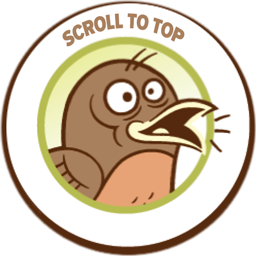Seems these days you can hardly pick up the paper, watch the news, or read a magazine without coming across some sort of article on the perils of toxins in products all around us-toys, drinking bottles, baby bottles, perfume, lotion, and just about anything else you can think of! The unfortunate reality is that there actually are many types of synthetic hazardous chemicals (toxicants) found in many products. However, the good news is that we can prevent many of those exposures through individual actions. More broadly, by working to change policies systems-wide, they will be more protective of humans and the environment.
What’s the source of this problem? It begins with the fact that there are between 80,000 and 100,000 chemicals registered for use with the US Environmental Protection Agency. You might be thinking that means they are okay. The truth is product registration only means that they have been tested to whiten shirts, kill roaches in the kitchen, get rid of mold in the shower, etc. It does notmean they have been tested for human health safety. In fact, only a very small portion have been tested and even fewer tested for children.1 This is bad news because children are much more vulnerable to toxic chemicals than adults for a variety of reasons including their age, rapid and unique growth and development, and how they live and play.
The problem is further compounded by several other trends. Science is now demonstrating that our historical understanding of the toxic dose making the poison wasn’t all that accurate. Some toxic chemicals in very small doses may have harmful effects on children – and not at all in larger doses or later in life. Science is also finding that some synthetic chemicals that we once took for granted as being helpful and harmless (those in plastic water bottles, for example)-may not be as safe as many of us previously believed.
One of the newest bad guys in the world of toxic chemicals is endocrine disruptors or hormone mimickers. They do pretty much as the name implies, the synthetic chemical mimics or fools our body by acting very much like a hormone and chemically telling it to do the wrong thing-sending a girl into puberty too early or causing a baby boy’s urethra to be in the wrong place, for example. These hormone mimicking chemicals may be found in toiletry items, pesticides, plastics, and even toys.
What is one to do? Fortunately, there are a lot of organizations doing research and providing answers for us. One important strategy is to find safer substitutes (both in our individual homes and the labs where manufacturers develop products helpful to us in everyday life). Regarding home cleaning, use non-toxic alternatives: either those labeled as non-toxic, or make a home-made cleaner using recipes from reduce.org. Many people concerned about the possible harm caused by chemicals in plastic water bottles prefer to use unlined stainless steel bottles. Given the concerns some people have regarding the potential harm caused by chemicals in some plastics, many advocates suggest using non-plastic alternatives such as glass, Pyrex, stainless steel bottles and pots, and cast iron skillets for food and beverage preparation or storage. Many parents concerned about safe toys prefer to use durable, non-lead-painted wooden, metal, fabric, and paper toys. There is a tremendous amount of information regarding these potential hazards and safer alternatives.
The chart below attempts to synthesize key sources of information found on the internet by subject. These links may also be found on the Preventing Harm Minnesota (PHM) website at preventingharmmn.org. One of the most important things any of us can do is to support policy change efforts so that we don’t have to think twice about whether or not things are safe like that water bottle in your back pack, the teething toy your new niece is sucking on or the shampoo in your bathroom. To learn more about policy change efforts, contact PHM at healthykidsmn@gmail.com or visit the following websites: healthylegacy.org or ewg.org. Also try calling the manufacturer of a given product both to ask if a chemical of concern is present (such as lead in a toy) and to ask them to remove harmful chemicals from what they produce. 
|
Topic
|
Website
|
|
Baby Bottles
|
ewg.org/sites/doitgreen.org/files/EWG_babyguide.pdf
|
|
Baby Products
|
cosmeticsdatabase.com/special/parentsguide
|
|
Endocrine Disruption/Hormone Mimickers
|
ourstolenfuture.org
|
|
Environmental Health Information
|
healthandenvironment.org
|
|
Health Care
|
noharm.org
|
|
Home Cleaning
|
reduce.org
|
|
Household Tips
|
healthychild.org
|
|
News of Environmental Health
|
environmentalhealthnews.org
|
|
Personal Care Products (shampoo, lotion, make up, etc.)
|
cosmeticsdatabase.com
|
|
Pesticides
|
panna.org & www.beyondpesticides.org
|
|
Plastics: Safe Plastics Guide
|
iatp.org (see the Fact Sheets section)
|
|
Toys
|
healthytoys.org
|
1
“The U.S. government has not conducted even basic toxicity testing for about 75% of the 15,000 high-volume chemicals in commercial use. More than 90% of these high-volume chemicals have not been tested for health effects on children,” Toxic Ignorance: The Continuing Absence of Basic Health Testing for Top-Selling Chemicals in the United States, US Environmental Protection Agency (Environmental Defense Fund, Inc. 1997) www.epa.gov/opptintr/chemtest, www.environmentaldefense.org/pubs/Reports/ToxicIgnorance. Cited in Household Detective: Protecting Your Children from Toxins at Home, Healthy Child Healthy World, Jan Williams. healthychild.org.

